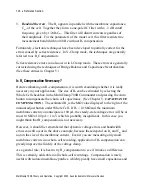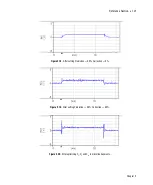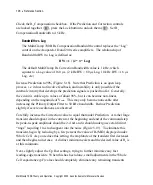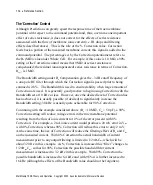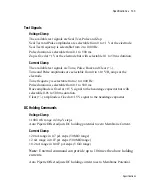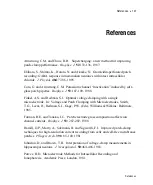
Reference Section
•
135
Readjustment of Whole Cell Compensation with ‘Correction’
If the capacity transient has been canceled prior to the use of Correction (and for
now assume that Prediction has already been set at 95%) then, in principle, there is
no capacity current to feed back when Correction is utilized. Note that the
discussion here of capacity current should be distinguished from the discussions of
the ionic current. Therefore, no transient should develop as Correction is advanced.
In practice, however, a small transient will emerge as % Correction is increased.
Again, this is due to non-ideal characteristics of the circuitry. As in the case of
‘Prediction’, the small residual transient that emerges can be completely removed
by small readjustments of the setting of the Cp Fast and Whole Cell controls. (See
“Adjusting R
s
Compensation”, above.)
Setting ‘Prediction’ and ‘Correction’ Values
There are many situations in which it will be desirable to have the % Prediction and
the % Correction controls set at different values. For example, for a 200 mV step
command Prediction should be limited to about 80% to avoid saturation. (See
“Saturation Effects”, above.) However, it is usually possible to compensate series
resistance up to 90 to 95% or more by use of the Correction control. In other patch
clamps the issue of saturation would limit the amount of compensation used for
ionic currents; this is not true in the MultiClamp 700B. On the other hand, in some
cases it might be impossible to advance the Correction percentage beyond about
70% without causing instability. Nevertheless, Prediction, which is inherently
stable up to 98% or more, can be set to a value substantially higher than 70% (about
95%), thereby ensuring that the true transmembrane potential changes rapidly in
response to the command potential even though a substantial series resistance
remains uncompensated in terms of ionic currents.
Oscillations
One of the practical problems when using the % Correction function
of R
s
Compensation is that there is a great risk of oscillations because the Correction
circuitry
is a form of positive feedback. The main cause of oscillations is the
Chapter 5




